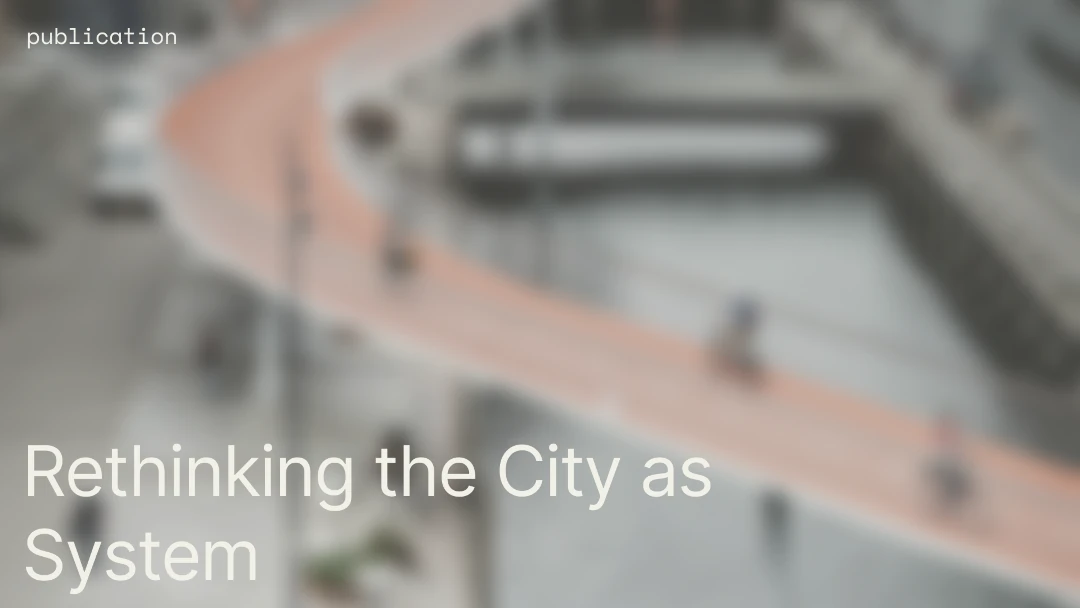
As the construction sector faces increasing scrutiny over its environmental impact, there’s growing momentum toward embedding circularity into building practices. A recent report from the Joint Research Centre (JRC) of the European Commission presents a comprehensive view on transforming the industry through standardisation. This report, Circular Technologies in Construction: Putting Science Into Standards, highlights essential strategies for fostering a circular construction ecosystem.
Construction is a cornerstone of the European economy, but it is also the largest single source of waste in the EU, accounting for 35% of total waste generation and consuming half of all newly extracted materials. The sector's current model—often referred to as “cradle-to-grave”—typically results in high levels of waste and carbon emissions.
In a “circular” model, the industry seeks instead to retain the value of buildings, products, and materials by maximising their reuse, adaptability, and recyclability. This approach has —in theory—significant environmental benefits, with reduced resource consumption, a much lower waste output, and improved material efficiency. However, circularity requires a drastic shift from today’s approaches, with robust frameworks and standards that ensure safety around reused materials and establish quality benchmarks. The JRC report identifies four strategic areas where standardisation can drive meaningful progress in circular construction.
To gauge the impact of circular practices, the report advocates for a comprehensive framework to measure and report on circularity. Key metrics would include the durability, adaptability, and reusability of materials and buildings. Life Cycle Assessment (LCA) tools and Building Information Modelling (BIM) systems are highlighted as valuable tools, allowing architects and engineers to measure circularity at both material and building levels. However, to be practical, these tools need standardised indicators, shared definitions, and transparent reporting methods.
The European Commission has already developed the Level(s) framework to evaluate and improve building sustainability, focusing on core areas such as resource efficiency, health, and environmental impacts. Expanding Level(s) to include more specific circularity metrics would allow architects and engineers to assess a building's lifecycle performance, providing a basis for industry-wide benchmarks and best practices.
One of the most significant barriers to circular construction is the lack of trust in the performance and quality of reused materials. The JRC report stresses the importance of clear, reliable standards for the quality assurance of these materials. For instance, end-of-waste criteria would allow materials to safely transition from waste to reusable status, ensuring they meet rigorous safety and performance standards.
In addition to establishing end-of-waste criteria, the report calls for harmonised testing and certification protocols for recycled materials. This could involve frameworks for certifying products made from reclaimed steel, recycled concrete aggregates, and other secondary raw materials, providing confidence for both designers and end-users. European initiatives such as the Buildings as Material Banks (BAMB) project and the Product Circularity Data Sheet (PCDS) are early efforts in this space, focusing on setting traceability standards and integrating circularity into material passports. Ultimately, robust quality assurance standards are the only thing that could increase market acceptance of reused materials.
The design phase is crucial for enabling circularity. The report underscores the importance of designing buildings and components with adaptability, disassembly, and reuse in mind right from the start. ISO 20887, a standard for design for disassembly and adaptability, offers initial guidelines, but further work is needed to embed these principles into standard industry practices.
Designing for circularity means rethinking traditional construction techniques. Prefabrication, modular construction, and selective demolition are valuable strategies for achieving this.
Architects and engineers can also embrace BIM and Digital Twin technologies to model a building’s lifecycle, allowing them to plan for easy disassembly and reuse from the outset. By incorporating these design principles, buildings can be seen not as fixed assets but as adaptable structures, capable of evolving to meet future needs with minimal environmental impact.
The JRC report also calls for stronger frameworks around circular procurement. Circular procurement would set clear standards for evaluating the lifecycle impacts of materials and products, integrating criteria such as carbon footprint, resource efficiency, and recyclability. As construction procurement typically prioritises cost and immediate functionality, a shift toward circular criteria would require significant but achievable adjustments across the industry.
The report identifies data management as a linchpin for circular construction. Effective data reporting, management, and storage systems are necessary for tracking the lifecycle of materials and buildings. Standards like the Digital Product Passport and the Digital Building Logbook are potential solutions for maintaining transparent records of material sourcing, composition, and lifecycle impacts. These digital tools could provide architects, engineers, and other stakeholders with accessible, verifiable information on a building’s circularity profile, supporting decisions around reuse, refurbishment, and disassembly.
There’s also a need to ensure interoperability between different data management systems. By standardising reporting formats and compatibility protocols, the industry can streamline data-sharing across various stages of a building’s lifecycle. Open data standards, when combined with BIM and Digital Twin technologies, can create a cohesive digital ecosystem that tracks and manages a building's circularity throughout its lifecycle. This transparency will also foster accountability and ensure adherence to circular principles.
The JRC report offers actionable steps for transitioning toward circular construction, here are the key takeaways:
While the transition to circular construction is still in its early stages, the JRC report lays the groundwork for widespread change. Implementing these standardisation measures will require collaboration across all levels of the industry, from architects and engineers to manufacturers, suppliers, and regulators. The involvement of the New European Bauhaus, with its focus on cultural, environmental, and social inclusiveness, adds an essential dimension to the circularity conversation, embedding these values into the construction sector's future trajectory.
In summary, for architects and engineers committed to sustainable construction, the push toward circularity presents a profound opportunity to reshape industry practices. The emphasis on standardisation, quality assurance, adaptable design, and data transparency forms a clear pathway toward a circular construction ecosystem—one that aligns with Europe’s broader sustainability goals and sets a global benchmark for environmental stewardship.




























